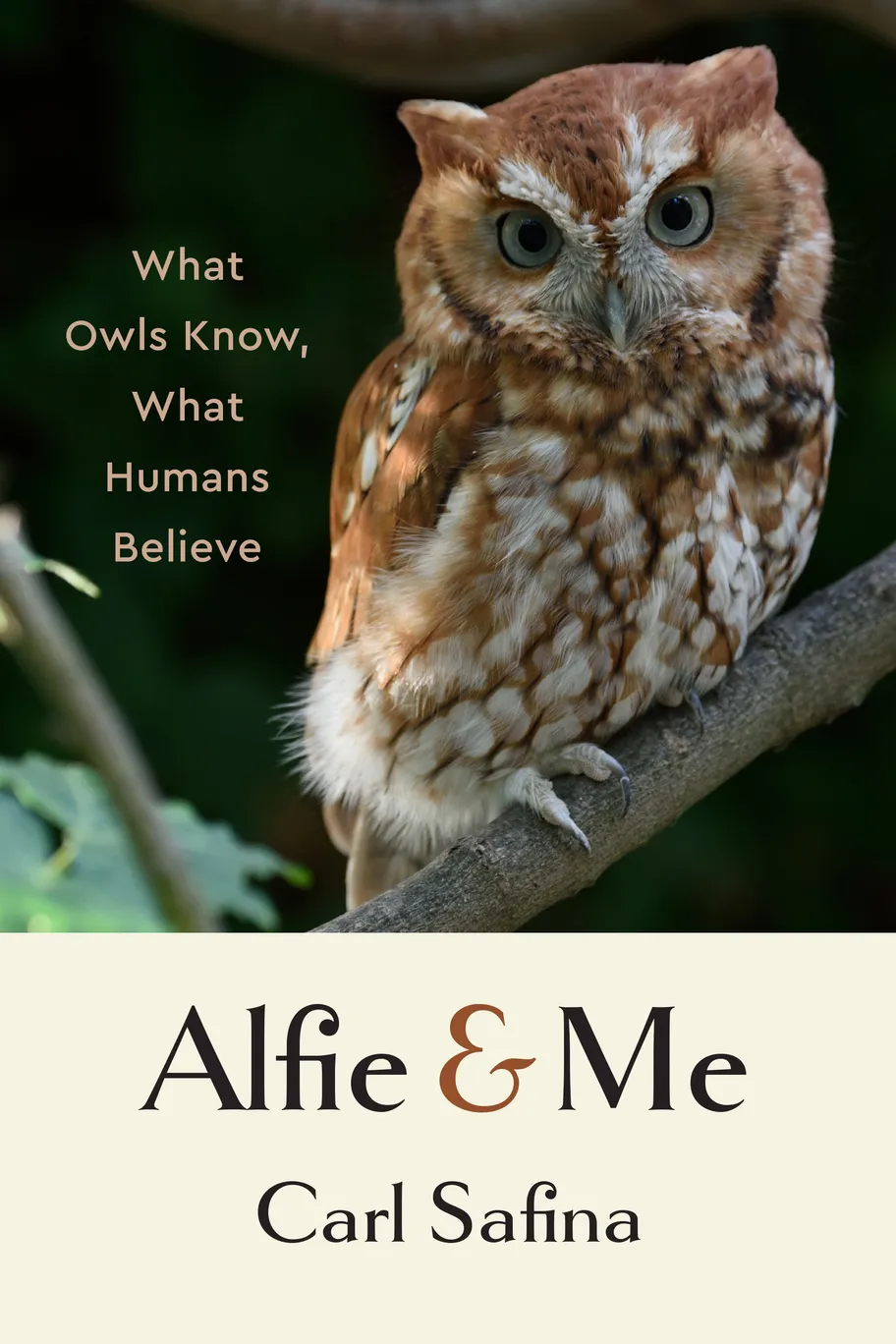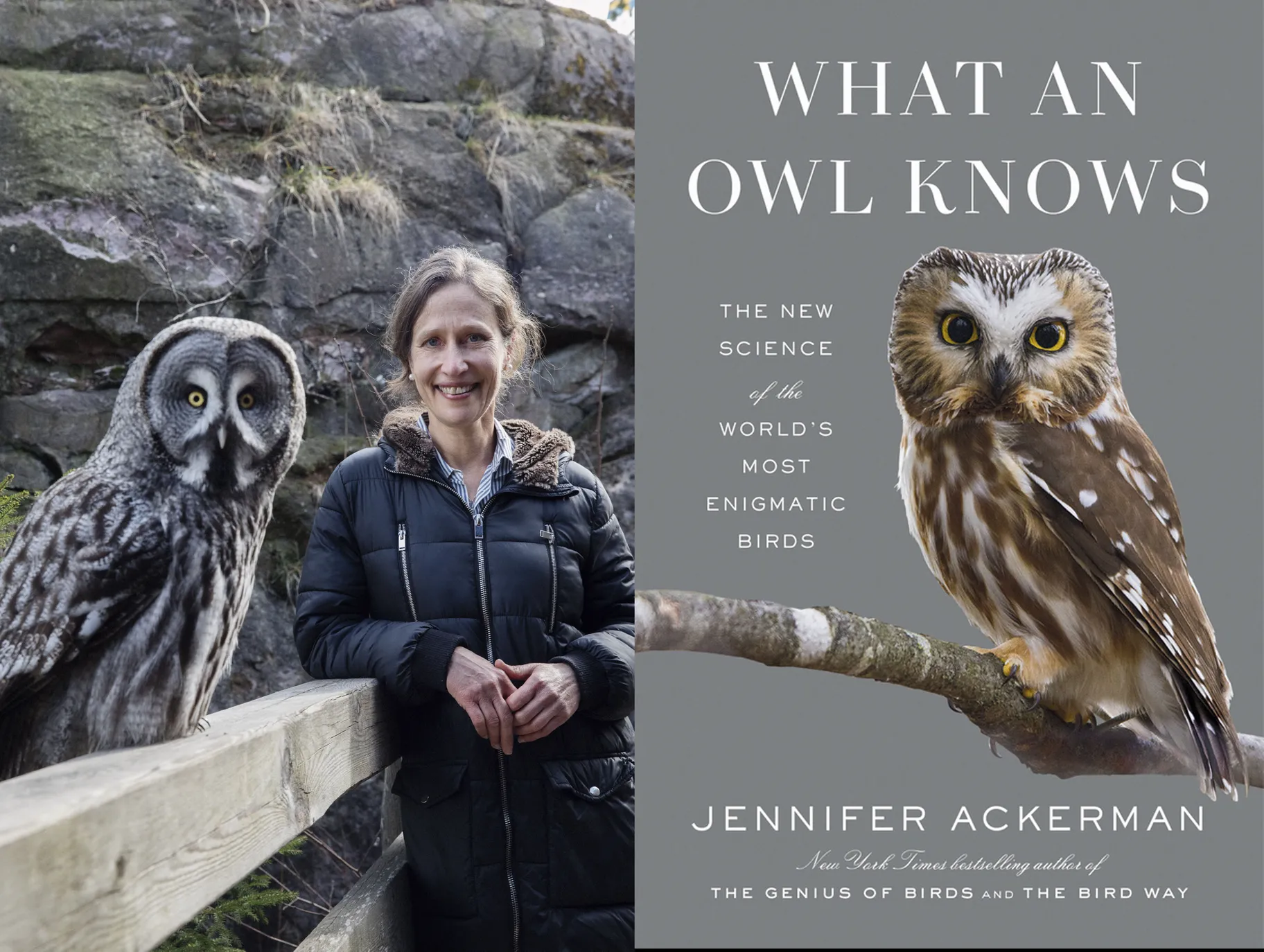When it comes to birds, the owl is an enigma. They span over 200 species — from the great gray and horned owl, to the snowy white and barn owl — and live on every continent except Antarctica.
The owl is the penultimate stealth predator and nature's own form of pest control, with silent flight, binocular vision, and a sense of hearing that’s unequaled in the animal world. Owls are simultaneously beautiful and fierce, and spooky and adorable. Their “hoot” is unmistakable.
Carl Safina, ecologist and founding president of The Safina Center at Stony Brook University, has raised many different kinds of birds, including owls, and used to be a falconer. When a friend found a baby screech owl — no more than 10 days old — Safina planned to release her in their backyard. But, he says, “the plan had a flight delay because she didn't really grow her wing feathers in properly, and I couldn't turn her out because she couldn't fly.”
Safina named the baby owl Alfie and spent the winter trying to teach her how to hunt while they waited for her adult plumage to come in so she could fly. Safina, his wife Patricia, their dogs and chickens adjusted to life with Alfie.
“The main thing was, we did not want Alfie to be caged ever,” he says. “So when she was young, she was just loose all the time — loose in the house [or] loose outside with us and she'd be hopping around.”
Safina says it helped that Alfie arrived during the pandemic, when much of humanity was in retreat and he had hours to watch and care for her.
“[Owls] bond in a way that is more recognizable to us. They like to preen to each other and therefore, if one is in your care, they like to be getting some preening from you,” he says.

In his book Alfie and Me: What Owls Know, What Humans Believe, author Carl Safina shares the joy he got from rehabilitating a baby owl to a full grown adult. “It just feels magical, that this owl who has known as all our lives has become a fully competent, capable mother doing her part in the great chain of being that has been unbroken for all these millions of years and that she will still sometimes choose to just come and land a few feet away from where I might be if I'm outside at night,” Safina says.
Safina chronicles his joyful experience with Alfie in his book Alfie and Me: What Owls Know, What Humans Believe. What he imagined would be a straightforward process of preparing an owl to return to the wild turned into a more deep and meaningful experience, raising broader questions about philosophy, spirituality, and our ability to coexist with the natural world.
“Why didn't I know what was going on in my own backyard? I'm relatively attuned and inclined toward these kinds of things,” Safina says. “Is that a natural destination of the human mind to be unaware of what lives around us.. or are we taught not to be interested?”
Science writer Jennifer Ackerman shares some of the latest science on owls and why these mysterious birds exert such a hold on the human imagination. Ackerman, who’s written several books on birds, including What an Owl Knows:The New Science of the World's Most Enigmatic Birds, is fascinated by an owl's extraordinary binocular vision. “owls have eyes that are huge. If our eyes were in similar proportion to our bodies as an owl’s eyes are to its body, they'd be about the size of an orange and they'd weigh about four pounds… their retinas are super sensitive to light, so owls can see in very, very dim light.” And, Ackerman adds, an owl is “just exquisitely sensitive to sound.
“Anatomists have discovered that the part of the visual nerve, or the hearing nerve, in the brain goes to the optical center in an owl's brain. So it may actually be getting a visual picture of the sounds that it hears.”
In addition to being the consummate apex predator, owls have long been the subject of folklore, poetry, and mystery. Ackerman explains that as symbols attitudes have varied greatly across cultures and history. The ancient Greeks saw them as symbols of wisdom and prosperity, and in northern Japan they’re considered as “kind of protectors of their villages.” But there are other cultures “that see owls as emblems of evil or bad omens that are linked with death.”
More important to both Carl Safina and Jennifer Ackerman than any ancient mythology or folklore is that owls are beautiful, subtle, and ingenuous creatures that we need to care “more about their survival and [to] support work that's going on to conserve these birds and their habitats.”

Jennifer Ackerman, pictured here with a great gray owl, says that an owl is camouflaged so well that it makes research on these birds very challenging: “They're just so cryptic and so secretive that they're very hard to even find, much less to study.” Photo courtesy of Sofia Runarsdotter.
Delve deeper into life, philosophy, and what makes us human by joining the Life Examined discussion group on Facebook.
